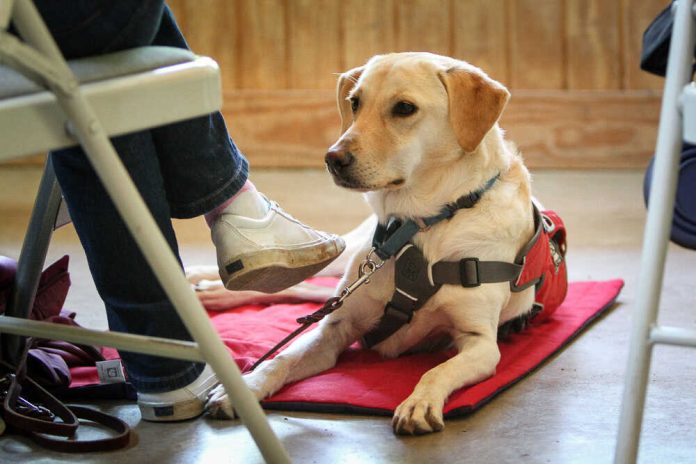Researchers at Cambridge University in the UK are exploring whether the detection of a certain chemical in a type 1 diabetes patients’ breath can warn patients when they have dangerously low blood sugar levels. Researchers believe that some dogs can spot warning signs of dangerously low blood sugar in patients by sniffing the breaths of diabetics. The researchers hope to develop a breathalyzer-type of test that can alert patients to potentially dangerous changes in sugar levels.
Low blood sugar, known as hypoglycaemia, can cause symptoms such as fatigue, disorientation, and shakiness. These episodes can occur suddenly with little warning in some people with diabetes. If the person does not take in sugar in time, their condition could cause seizures and lead to unconsciousness.
“Low blood sugar is an everyday threat to me and if it falls too low – which it can do quickly – it can be very dangerous,”said Claire Pesterfield, a paediatric diabetes specialist nurse at Addenbrooke’s Hospital. Pesterfield has type 1 diabetes and requires insulin injections to manage her blood sugar levels. She owns a golden Labrador dog named Magic that has been trained by the charity Medical Detection Dogs to detect when her blood sugar is dropping to a potentially dangerous level. “Magic is incredible – he’s not just a wonderful companion, but he’s my ‘nose’ to warn me if I’m at risk of a hypo,” Pesterfield said about her dog. “If he smells a hypo coming, he’ll jump up and put his paws on my shoulders to let me know.”
Researchers believed that there are naturally-occurring chemicals in exhaled breath that change when glucose levels are low. During the study, they gradually lowered blood sugar levels under controlled conditions in eight women. The participants were in their forties and had type 1 diabetes. A method called mass spectrometry was used to detect chemical signatures. The results showed that the chemical isoprene rose and sometimes nearly doubled when sugar levels were low. The researchers believed that dogs may be sensitive to presence of isoprene in diabetics.
“Isoprene is one of the commonest natural chemicals that we find in human breath, but we know surprisingly little about where it comes from,” says Dr Mark Evans, Honorary Consultant Physician at Addenbrooke’s Hospital, University of Cambridge. “We suspect it’s a by-product of the production of cholesterol, but it isn’t clear why levels of the chemical rise when patients get very low blood sugar.
“Humans aren’t sensitive to the presence of isoprene, but dogs with their incredible sense of smell, find it easy to identify and can be trained to alert their owners about dangerously low blood sugar levels,” said Dr. Evans. “It provides a ‘scent’ that could help us develop new tests for detecting hypoglycaemia and reducing the risk of potentially life-threatening complications for patients living with diabetes. It’s our vision that a new breath test could at least partly – but ideally completely – replace the current finger-prick test, which is inconvenient and painful for patients, and relatively expensive to administer.”








